UleFone Power Armor 14 Pro
UleFone is a rugged phone maker that has consistently delivered affordable and feature-packed designs since they were founded in 2006 in Shen Zhen, China.
While it makes phones for almost every pocket, the most successful designs UleFone produces are from its ubiquitous Power series.
These combine a high degree of ruggedization with large battery capacity, making them ideal for wilderness adventures or outdoor occupations.
Today we’ll be looking at the latest Power series hardware, the UleFone Power Armor 14 Pro, and wondering if there are practical limits to how big and heavy a phone can realistically get and still be practical?
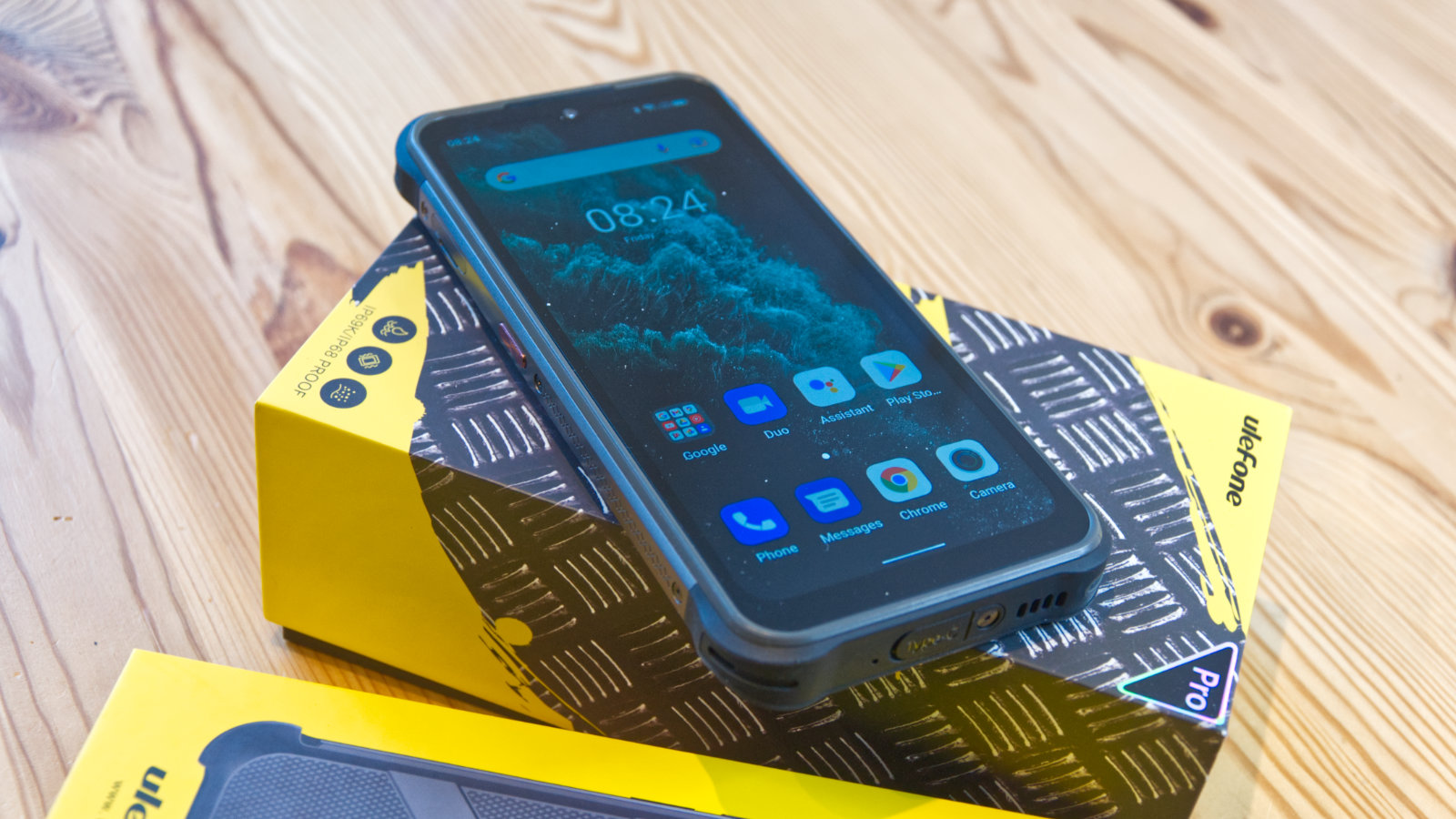
Price
The Power Armor 14 Pro costs just $259.99 from UleFone (plus shipping), making it only $40 more than the lower-spec Power Armor 14 design.
In addition to the phone on its own, UleFone also sells it with a special protective case that has a belt clip and carabiner to help protect the phone. The phone and protective case costs $284.98 when bought together.
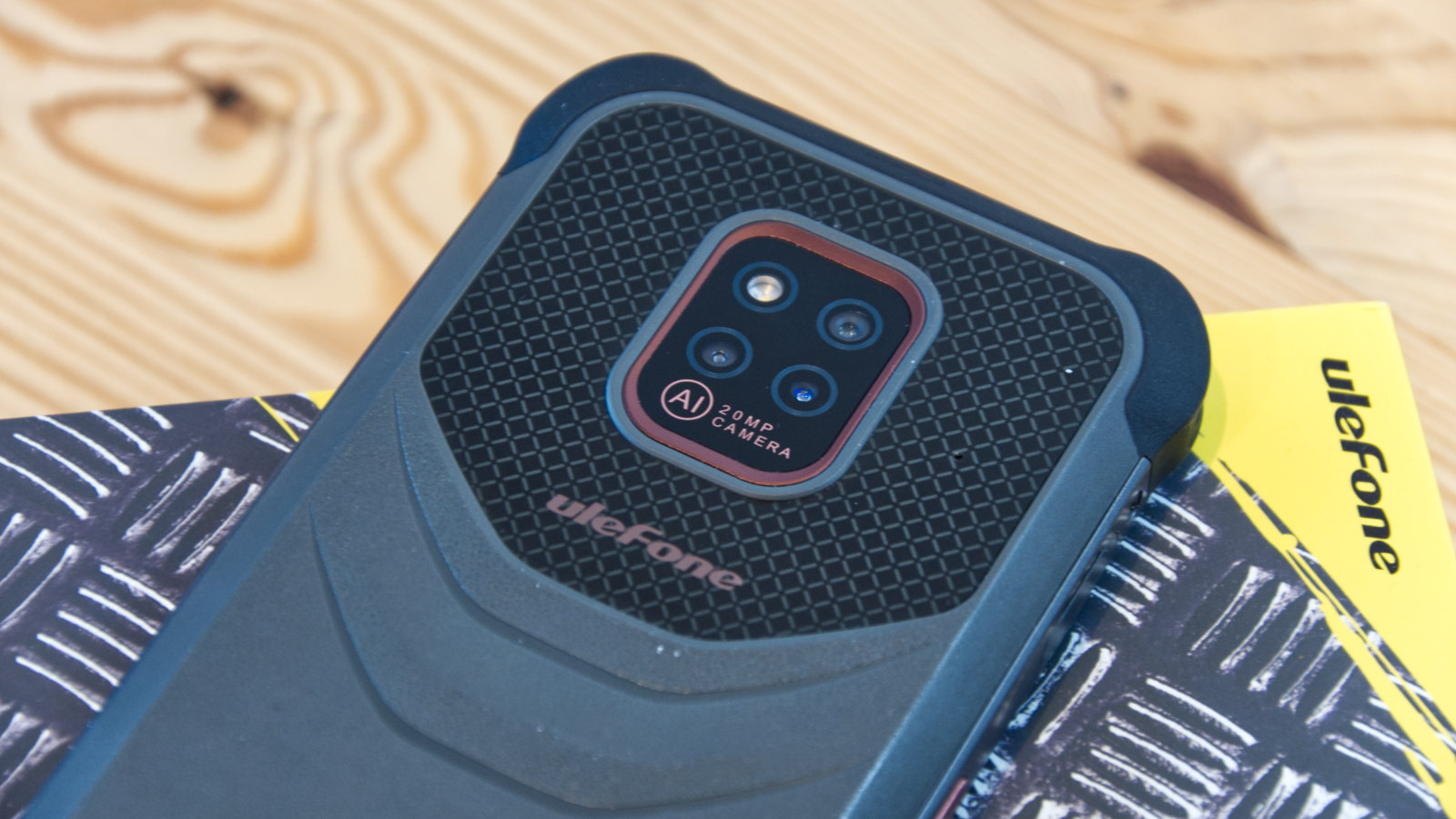
Design
What’s heartening about rugged phone designs is that those designing them are finally getting away from making them look like props from a science fiction TV show.
While undeniably chunky, the Power Armor 14 Pro wears its robust construction well, and in places, it even borders on elegance.
That said, it is a monumental phone with an enormous 6.52" IPS TFT screen that weighs an impressive 357g, excluding the additional protective case.
That’s another 60g more than the Jesy J20 and Doogee V20 and only exceeded by a few grams by the Blackview BV8800.
With so much mass in the phone and a relatively smooth back with a recessed camera cluster, this is a design that needs to be in a zipped pocket to avoid being unintentionally launched.
What’s good about the Power Armor 14 Pro is that it uses an uncomplicated arrangement of buttons and ports that most users will immediately relate.
On the right side are a volume rocker and a dual function thumbprint reader and power button, making for a very natural unlock using the right hand.
Conversely, the left has access to the SIM card tray and a user-programmable button that is good for snapping images or activating the flash for illumination or whatever you need to do regularly.
The lower edge has a centrally mounted USB-C port for charging and data transfers covered in a rubber plug to maintain waterproofing.
Another rubber plug is on the top edge covering a 3.5mm audio jack, something that seems an increasingly rare feature on modern Android designs.
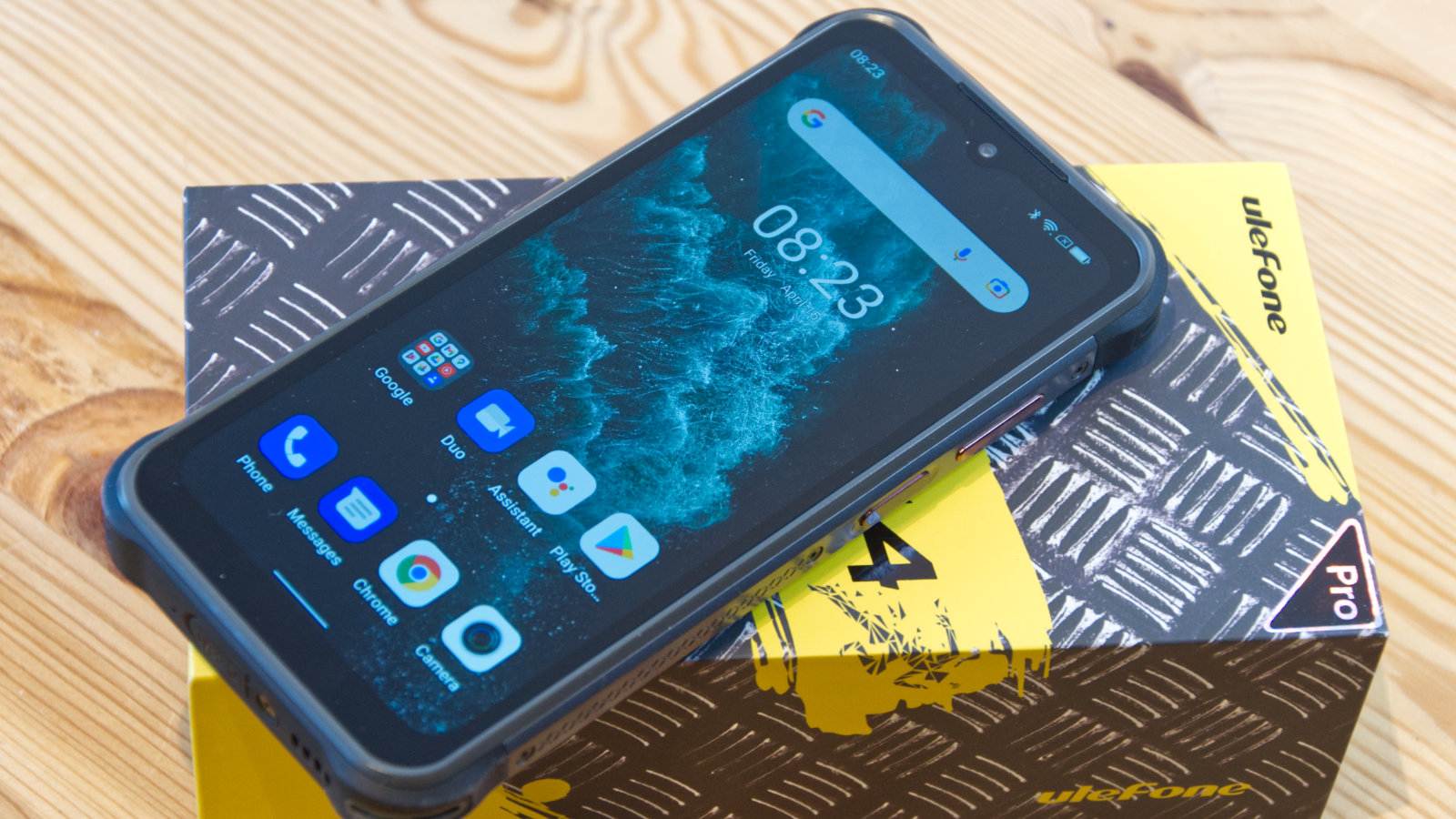
The biggest issue here is undoubtedly the scale of the phone, as it won’t easily fit in trousers or shirt pockets. Given the rugged nature of the design, it looked like a good candidate for drone flying use. But, it’s way too thick to fit in the standard DJI controller, and a tablet adapter is the only means to mount it securely.
Overall, many users will think that whatever the technology in it doesn’t justify having to drag this unwieldy lump around with them.
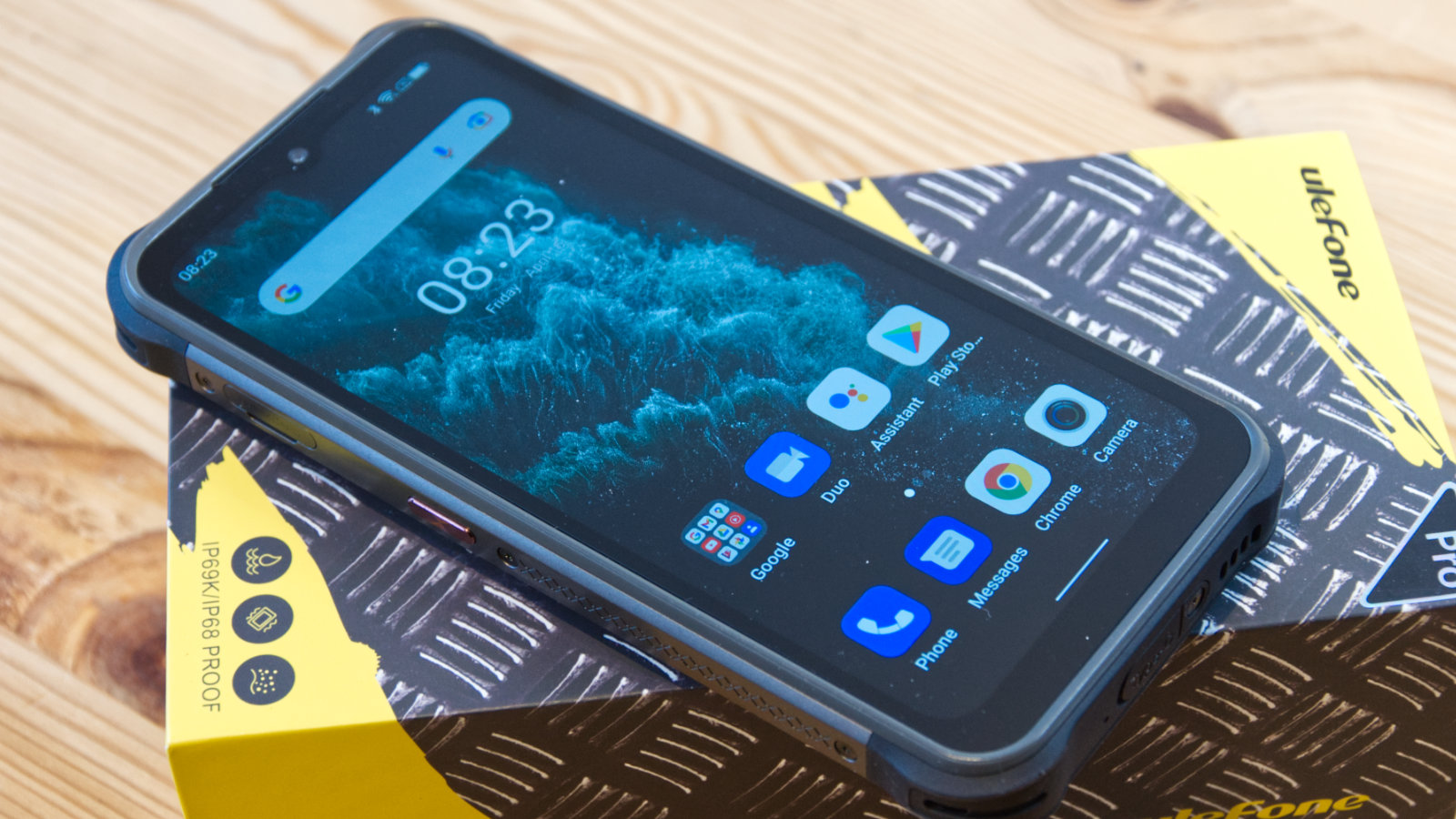
Hardware
The UleFone Power Armour 14 Pro that was sent to us for review came with the following hardware:
CPU: MediaTek Helio G85 Octa Core 2.0GHz
GPU: Arm Mali-G52 MC2
RAM: 6GB LPDDR4X
Storage: 128GB (microSD memory card Up to 1TB)
Screen: 6.52" IPS TFT
Resolution: 720 x 1600
SIM: Nano + Nano/T (hot swap)
Weight: 357g
Dimensions: 175.6 x 82.5 x17.2 mm
Rugged Spec: IP68, IP69K and MIL-STD-810H
Rear camera: Triple camera (20MP + 2MP + 2MP) SONY IMX350 Sensor
Front camera: 16 MP SONY IMX481 Sensor
OS: Android 12
Battery: 10000 mAh
Many of the recent Chinese phones released use MediaTek SoCs, and this one is no exception, sporting the newly released Helio G85 Octa Core silicon.
That’s a notch up from the Helio G35 that the non-Pro model has, and it delivers a little less performance than the Qualcomm Snapdragon 480 that is in the Moto G51 and a host of recent Nokia designs.
For general use, the Helio G85 SoC combined with 6GB of RAM and 128GB of storage should be adequate for most users. Storage can be expanded using a Micro SD card of up to 1TB.
The screen, like so many Chinese phones, has an odd resolution of 720 x 1600, which UleFone decided is ‘HD+’. Not sure HD+ is a thing, but it doesn’t have enough pixels to display 1080p video in full quality. It also has rounded corners and a cut-out for the front-facing camera, reducing the useable resolution even further.
This might seem like a real limitation until you realise that the best resolution video the SONY IMX350 camera sensor can capture is 1080p, and the Helio G85 SoC doesn’t have the video encryption security to get access to streamed content from Netflix, Disney or Amazon at more than 480p.
These problems aren’t special to UleFone, as it's been a feature of all the Chinese phones we’ve seen in the past year from Blackview, Jesy and Doogee that use MediaTek SoCs and SONY camera sensors.
The other significant limitation of this design is that it doesn’t support 5G, only 4G. For those regions with 5G reception, this might be an issue, or it would be if 4K streaming was a possibility, which it isn’t.
In the plus column, this design can accept dual SIM cards, if you choose not to use a Micro SD card, allowing it to easily switch between providers.
While the lack of a screen with sufficient resolution for 1080p video or better, the low video capture resolution, MediaTek SoC and 4G mobile connection are all less than optimal. They do allow UleFone to deliver a very functional and robust modern design, with vanilla Android 12 onboard for the low asking price.
Another positive feature of this hardware equation is a monstrous 10000 mAh battery that UleFone claims up to 540 hours of standby and 54 hours of talk time on this platform.
Recharging is also rapid, as the USB-C port supports 18W fast charging, and it can even charge at 15W over Qi wireless charging.
The SONY IMX350 might be rubbish at video capture, but the f/1.8 aperture and six-element lens can capture still images at up to 3840 x 5120 resolution. In this camera cluster, the main camera is supported by an f/2,8 2MP macro camera and a depth sensor.
Images are sharp and vibrant and mostly free of significant chromatic aberrations.
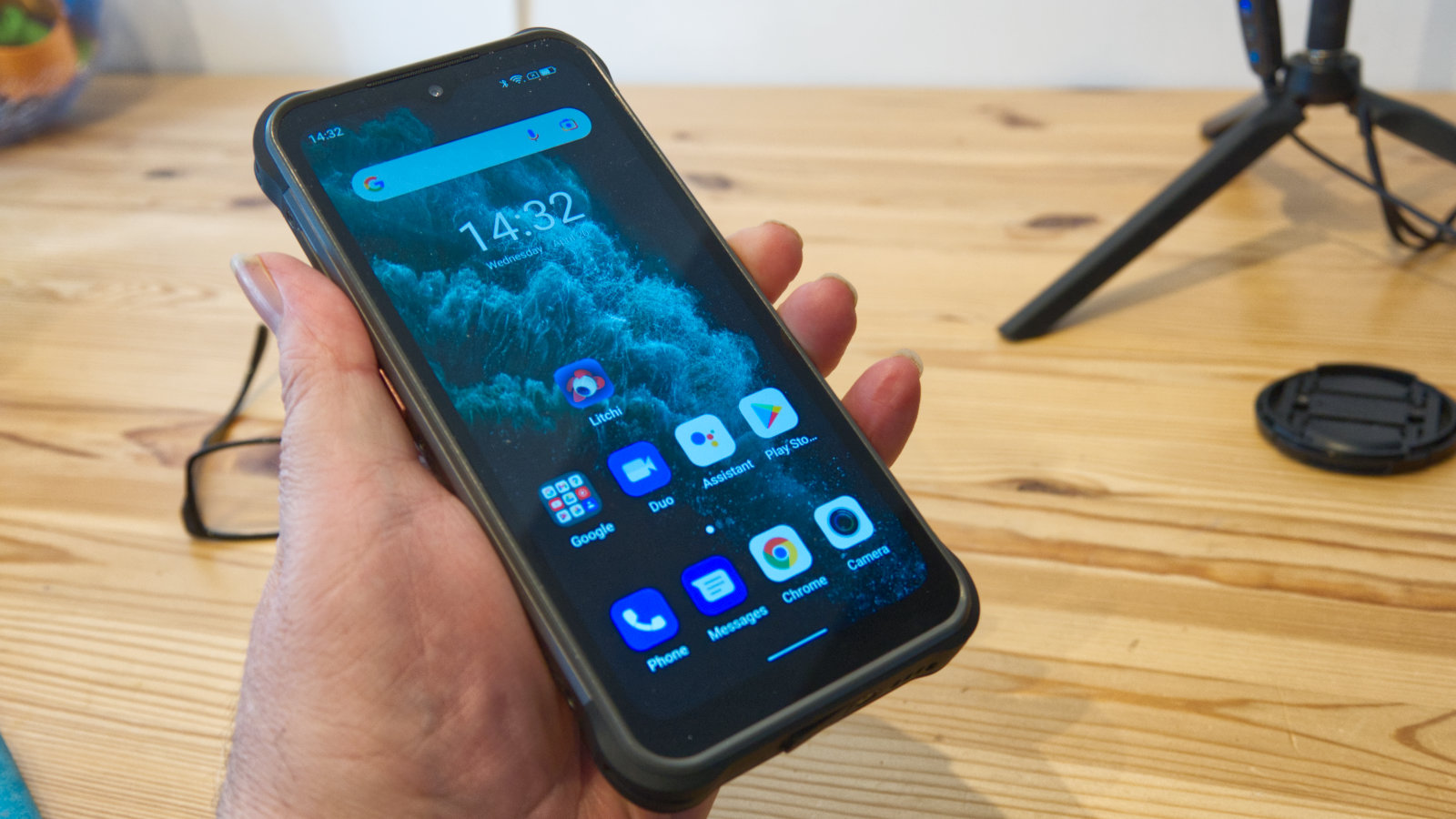
The front sensor is a SONY IMX481, providing an f/2.2 aperture and using a five-piece lens that can record video in 1080p.
Both video and still images can be taken underwater, though we’d be careful about taking the Power Armor 14 Pro much below the surface.
While this phone is rated for IP68 (maximum depth of 1.5 metres up to 30 minutes) under IEC standard 60529, dropping the phone to any depth greater than the spec or keeping it submerged for longer may prove disastrous. And, for the record, liquid damage is not covered under warranty.
It is also compliant with IP69K under IEC standard 60529, which is another rating for protection against dust and water ingress.
As with most rugged designs quoting MIL-STD-810G Certification, the Power Armor 14 Pro is designed to handle accidents and clumsiness to a much greater degree than ordinary mobile devices, but it is hardly indestructible.
Performance
This is how the UleFone Power Armor 14 Pro performed in our suite of benchmark tests:
Geekbench: 542 (single-core); 1658 (multi-core)
PCMark (Work 3.0): 8415
Passmark: 9361
Passmark CPU: 4528
3DMark Slingshot: 3472 (OGL)
3DMark Slingshot Extreme: 2456 (OGL). 2196 (Vulkan)
Wild Life: 1103 (Vulkan)
HWBot Prime: 4852
The performance of the UleFone Power Armor 14 Pro is a little disappointing when compared with the slew of rugged designs that utilise the MediaTek Dimensity 700 SoC.
However, the problem is probably not the CPU alone but the ARM Mali-G52 GPU that is part of the SoC package. The Doogee V20, Jesy J20 and Blackview BV8800 all used the more powerful ARM Mali-G57 over a range of clock speeds to great effect.
A good example of the difference is the 3DMark Slingshot score of 1825, where all the G57 CPU phones achieved over 3,400 in that test. The numbers from this phone are much closer to that of the Snapdragon 660 and Adreno 512 combination found in the CAT S62 Pro.
It’s a reasonable question to ask if most users will notice the difference, and that depends if they play games often. For those that do, this isn’t the ideal platform compared with the others with more GPU horsepower.
For less demanding users, this is a powerful machine that is very responsive to those using the typical suite of Android applications.
Battery life is predictably good when you have this many mAh under the hood.
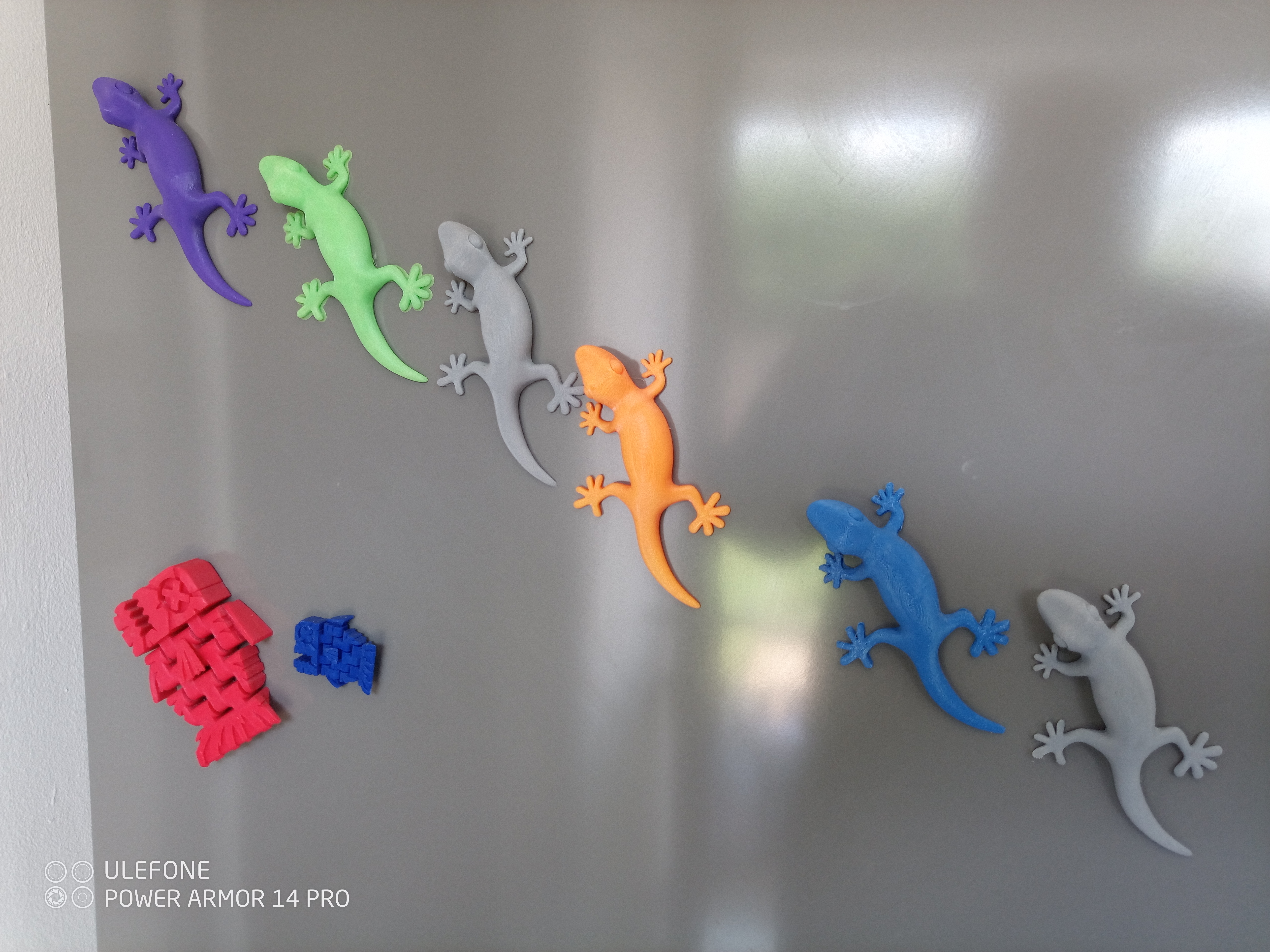
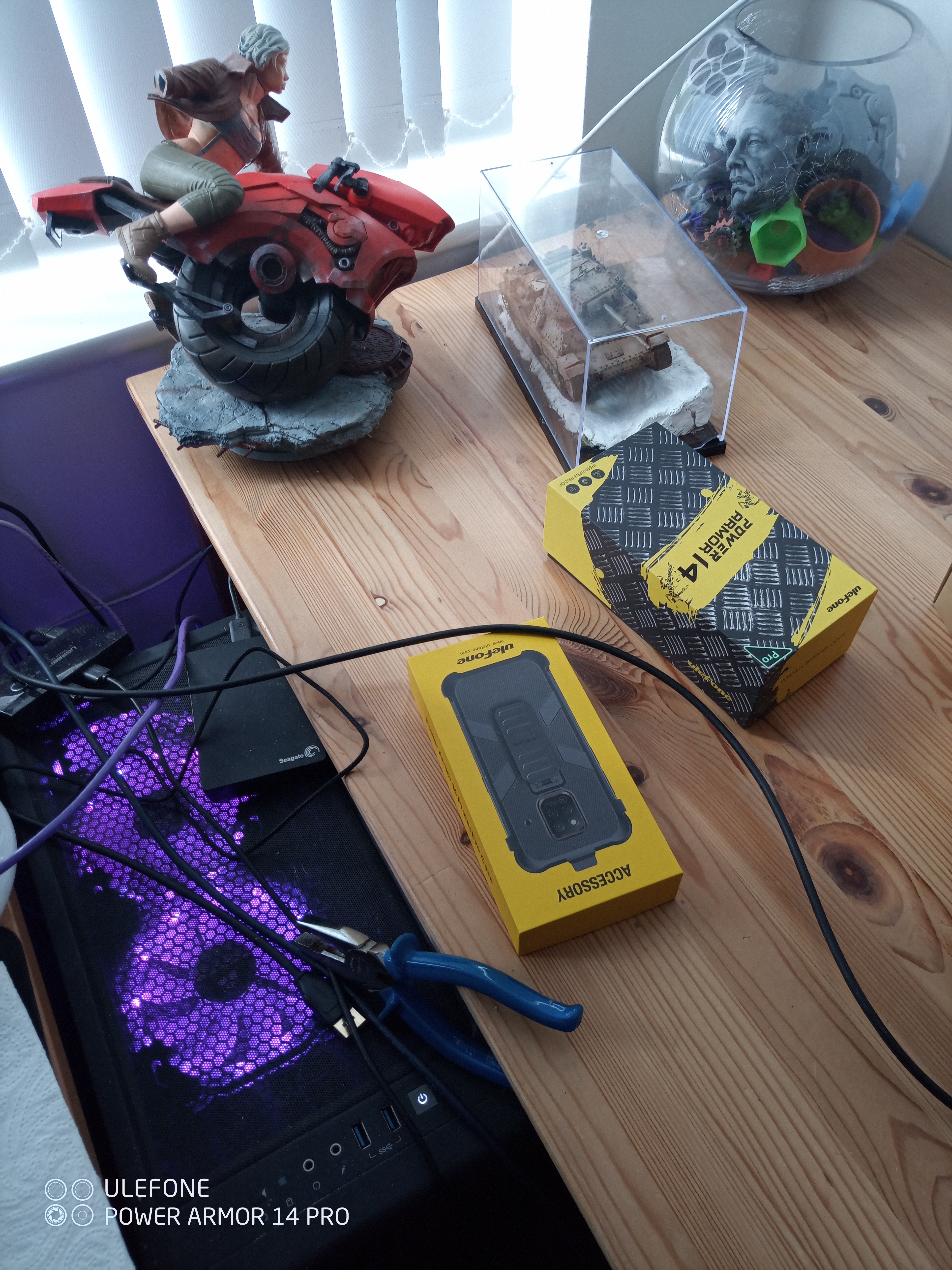
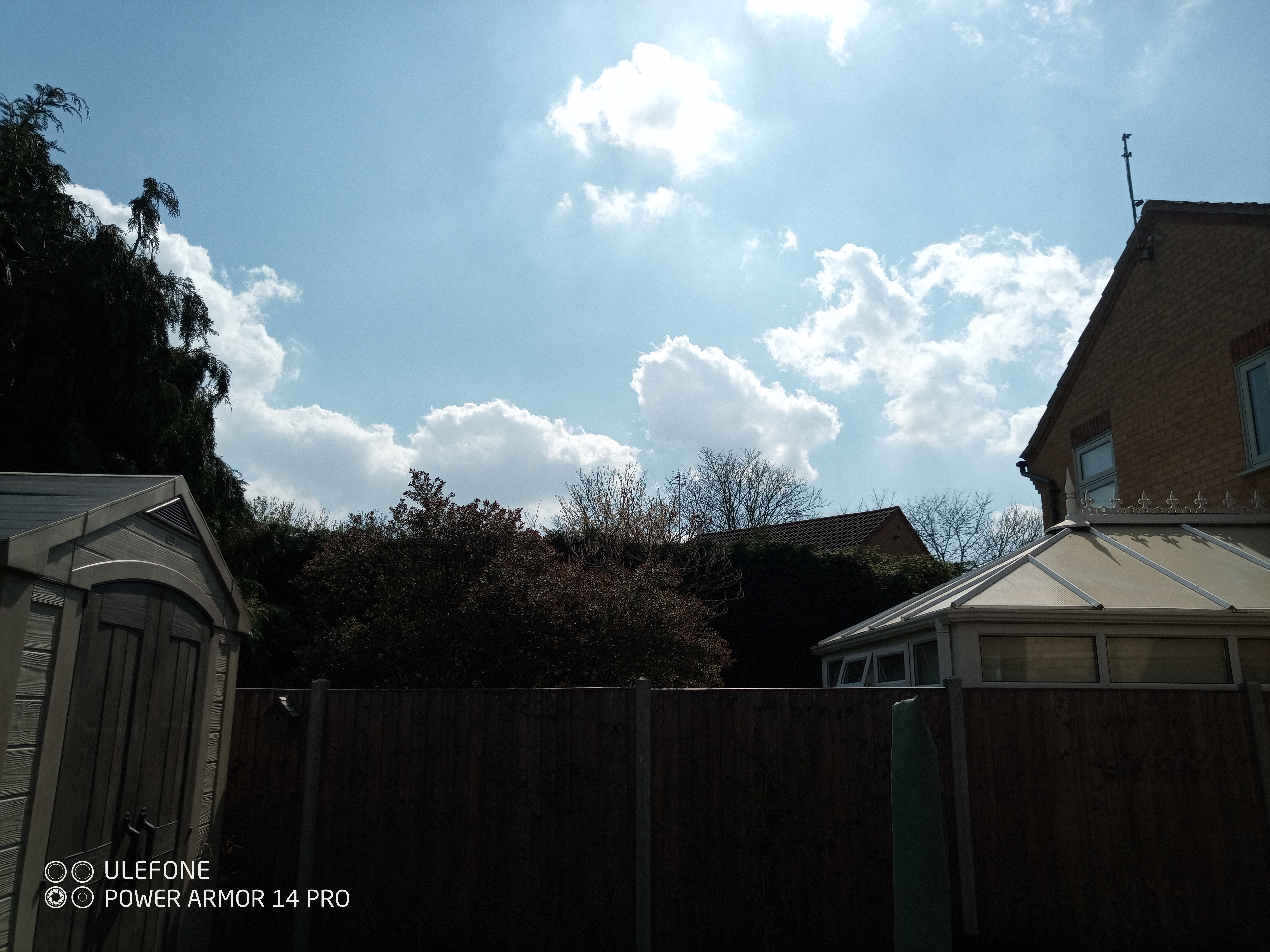




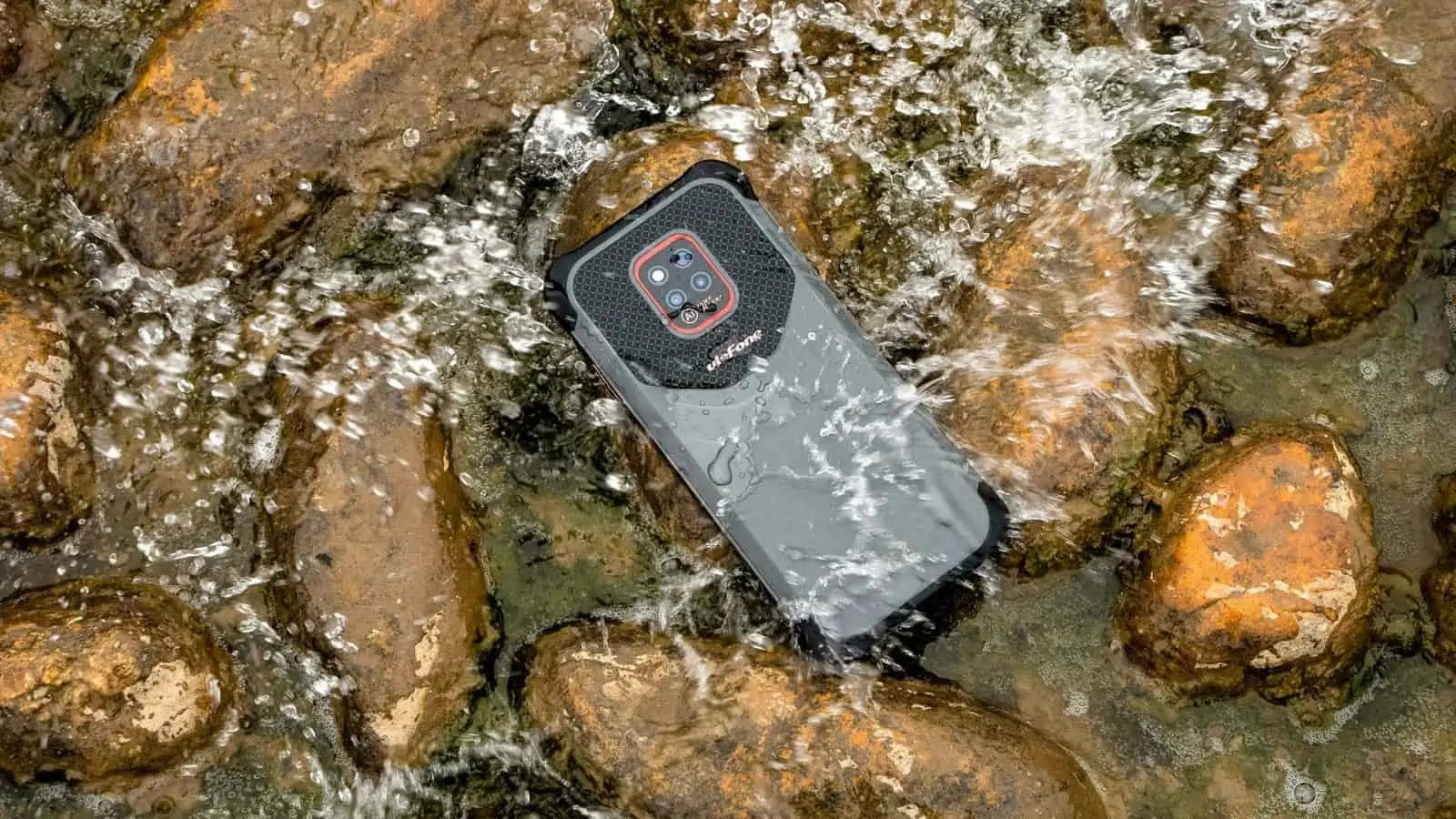
Final verdict
Rugged phone makers are rapidly forming into colour order, much like the riders on the Tour de France. And, UleFone isn’t immune from doing the same calculations about what delivers the best user experience for the minimum production costs.
Therefore, the SoC, camera sensor and construction are all the same as half a dozen competitor designs we’ve seen come from Chinese phone makers over the past year.
What UleFone specifically did with its design was to save on GPU and 5G technology and redistribute those costs for the significantly bigger battery than most of its competitors are using.
If battery life is the single most important aspect, then the Power Armor 14 Pro might be for you, unless you game heavily or you like 4K video capture.
Even if battery life isn’t as necessary, the low price might be attractive. Still, it doesn’t obscure that this is a phone made to a tight price point that aims to deliver enough to be respectable across a range of capabilities without being outstanding.
For those going deep into a jungle or desert and who want to avoid taking a top tier phone with rubbish battery life, then the Power Armor 14 Pro might prove a solid investment. Just don’t expect it to perform like a device that costs double or treble what this does.
- Also check out our complete list of the best rugged smartphones
0 comments:
Post a Comment